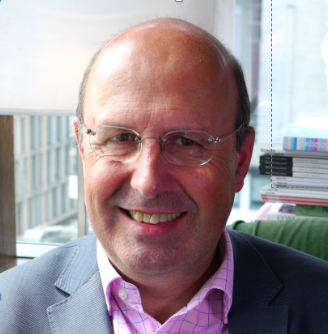You can sign up to our LinkedIn newsletter here
Becoming a portfolio executive is not for everybody and as I’ve been talking to people for the last 5 years, I feel that there are 10 good reasons not to become a Portfolio Executive. Here are the first five.
1) It’s too soon
If you are under 45 and if you are not highly entrepreneurial then it is probably too soon because you have not got enough blue chip or large corporate experience. So, if you want to shift out of full-time employment then consider being an interim or a contractor to widen the experience you need.
But there are exceptions: some individuals have a very specialist expertise and can successfully build a Portfolio Executive workstyle before they are 45. I have worked with an individual who has deep expertise in helping wholesalers to create a business-to-consumer online offer. After a few sessions, they successfully repositioned as a Portfolio Executive. Similarly, a multiskilled Finance Director, who had deep expertise in supporting corporate transactions, has now been able to build a portfolio of part-time FD focussed on spin out or post-merger integration. I can imagine for example that if you are an expert on cyber security you could easily build a portfolio of Chief Information Security Officer roles. In fact I am working with somebody who is doing just that.
2) I really need a corporate environment to thrive
Some of us only thrive when we are forced to turn up at a particular place at a particular time. As a Portfolio Executive you will have to start the day choosing and prioritising your workload and embrace that discipline. Not everyone can do this. They can only show up when then they are required to. In addition, they rely on all the support systems a corporate environment provides.
Piers Morgan was once on The Apprentice and part of a team trying to deliver a particular challenge. He demonstrated his need for a corporate environment because he didn’t even know how to put staples in a stapler!
If you are so dependent on everything being done for you then you are so senior that you can afford as a Portfolio Executive to pay for others to help you – even if they are not going to be putting staples in a stapler for you!
The Portfolio Executives that I work with recognise that they need to build a team to work around them to support them. I actively encourage them from Day 1 to start to put in place those other team members, on a part-time, on demand basis. Over the years I have built up my team or part-time on-demand assistance so that I have a team that helps me with appointment booking, my outbound linked, blog writing, my website, with my video, writing my book, my accounts. In fact, last time I counted up the number of people who are part-time members of my team, it was about 10.
I know I’m not good at everything and I know that other people can do things much more effectively than me in many cases. Over time I’ve built up this portfolio, if you like, of freelancers who fill these gaps. As you build up your Portfolio Executive workstyle having an office of the Portfolio Executive will give you increasing freedom. You don’t need the corporate environment to experience the upsides of your new workstyle.
3 – I don’t ever want to have to sell myself.
I often hear this. I don’t know how to sell. I can’t sell myself. I don’t want to sell myself. As a Portfolio Executive you are not out to sell yourself, but to enable your clients to buy. Set aside your images of slick double glazing or car salespeople. Your clients are looking for a long term trusted advisor relationship, not a bargain deal. They are well proven tools and techniques to enabling people to buy without a hard sell or cold call.
If you can demonstrate you are an expert on your client’s problems, they will confidently believe you are an expert on delivering the solutions your client needs. If they don’t have problems then they aren’t the client for you.
But if you don’t want to learn how to engage clients, be prepared to sacrifice your fees by using a broker or intermediary – typically they will take 40% and discount your rate. But you then have the reassurance of someone else who is opening the door for you, even if you still have to convince the client you are the best person for them once you get inside.
4 – I’m almost ready to retire
“I am in my mid-60’s and actually I only want to have two or three years more of work before I finally retire.” If this is you, then you may be very comfortable. Two or three years is long enough for you to get some traction around a Portfolio Executive workstyle. It’s long enough for you to earn you some good money and get yourself known and you may even find you wish to continue for longer. You may realise two or three years in that you’re value enhancing your retirement income and you want to have an interest in something purposeful and rewarding into your mid-70s.
Sadly, many of the people that I talk to as ‘ready to retire’ look at their expected pension (half of which may be shared with a previous spouse), their continuing obligations to a 2nd family and the outstanding mortgage on their home and they realise that their pensions and savings can’t sustain an enjoyable retirement and they need some income for at least another 10 years.
5 – I don’t know what Portfolio Executive I would be
There are some very interesting people that I come across who don’t know how to position themselves. I look at their LinkedIn profile, we have a conversation, and I discover that they have done an enormous number of things across the years. They may have had an IT related role earlier in their career but now they are multi-skilled with a whole range of experiences. They struggle to position themselves as a Portfolio Executive who is a ‘Head of’ or ‘Director of’ some business function. But again, and again, as I work with them, they can find one or two ways out of this dilemma.
If you really enjoyed Sales and Marketing and they struggled with the Finance and Product Development Portfolio, then perhaps Business Development is for you. Or if you have a really broad range of skills then perhaps Operations Director is the way forward. Perhaps you want to concentrate on what you can do around people and HR: you have got a lot of experience in Leadership and Development and establish yourself as a Head of Organisational Design.
10 good reasons….?
Yes, there are 10 good reasons (find the next 5 here) why you shouldn’t become a Portfolio Executive but are they really strong enough for you to give up all of the Freedom, Joy, Rewards and Opportunity that a Portfolio Executive workstyle can bring for the rest of your working life?

Charles McLachlan is the founder of FuturePerfect and on a mission to transform the future of work and business. The Portfolio Executive programme is a new initiative to help executives build a sustainable and impactful second-half-career. Creating an alternative future takes imagination, design, organisation and many other thinking skills. Charles is happy to lend them to you.
